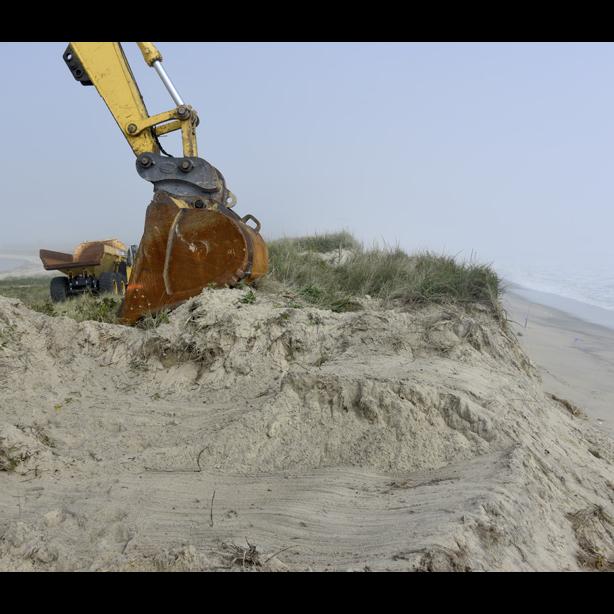World War Two
World War Two
November 9, 2023
Navy Origins Anchor Island Airport
Eighty years ago, while World War II was raging in Europe, the military carved 683 acres out of the state forest on the Vineyard to create the United States Naval Auxiliary Facility.
January 12, 2020
Nelson Bryant, Acclaimed Outdoor Writer Who Jumped Into Normandy, Dies at 96
The celebrated New York Times outdoor columnist and paratrooper who parachuted into Normandy during World War II, died Saturday.
August 15, 2019
Army Corps Confirms Recovery of Long-Buried World War II Bomber
A team of munitions surveyors from the U.S. Army Corps of Engineers has confirmed the discovery of a World War II-vintage Helldiver buried off Chappaquiddick.
May 9, 2019
Secret History of Martha's Vineyard During World War II
With the recent discovery of World War II-era bomber buried at Cape Pogue, the clandestine history of the Island’s involvement in World War II has come to the surface too.
May 6, 2019
Mayday on Martha's Vineyard
Excerpted from Martha’s Vineyard in World War II by Thomas Dresser, Herb Foster and Jay Schofield, an account by airman Joseph McLaughlin after flying over Vineyard waters during training exercises.
May 2, 2019
World War II Bomber Found Buried at Cape Pogue
Researchers believe they have found fragments from a World War II-era bomber plane that crash-landed in the frigid waters off Chappaquiddick during a doomed practice dive in the winter of 1946.
November 8, 2018
When Called He Served, When Called Again He Served Again
United States Marine Corps Capt. Eugene DeFelice (Ret.), now 97, is one of a handful of World War II veterans who are still around to tell their story.
September 28, 2017
Bomb Removal Begins at Long Point
An $8.1 million project to remove World War II-era munitions is underway at Long Point Wildlife Refuge on the Tisbury Great Pond.
April 4, 2017
World-War II Munitions Removal Work Resumes at Cape Pogue
A large project to remove World War II-era munitions from Cape Pogue is scheduled to resume this month, with additional work required because of the large quantity of practice bombs found in the area.
May 23, 2016
Old Munitions Cleanup Under Way at Remote Cape Pogue
The remote northern end of Chappaquiddick has been bustling with activity this spring as cleanup of World War II-era practice bombs begins.











